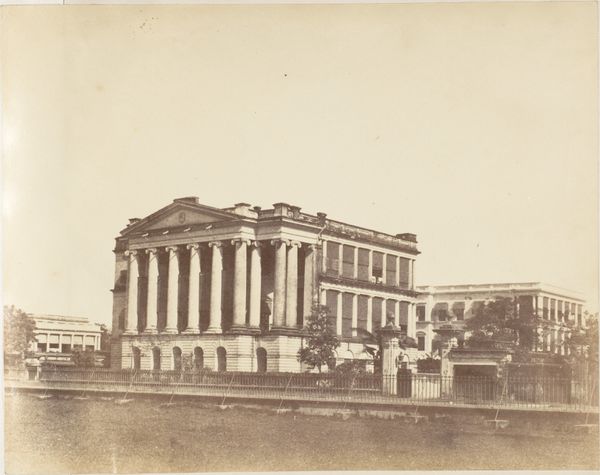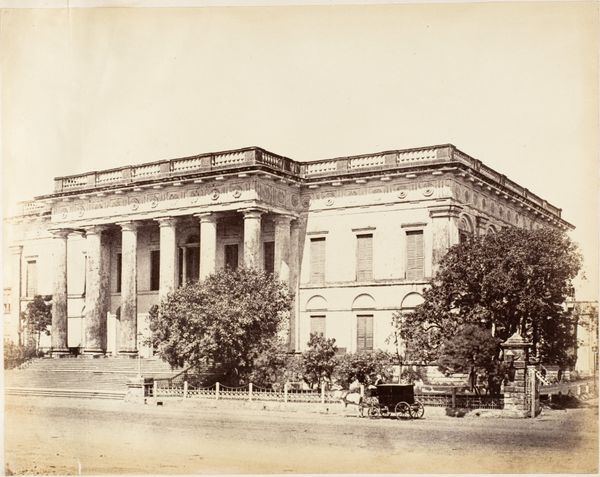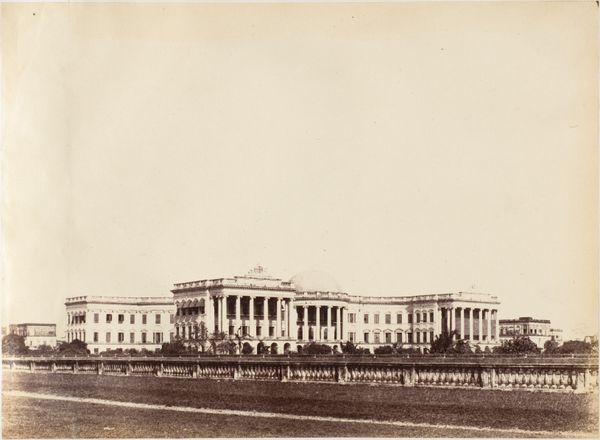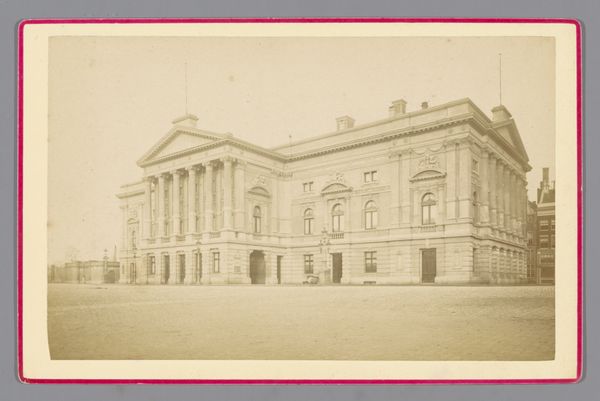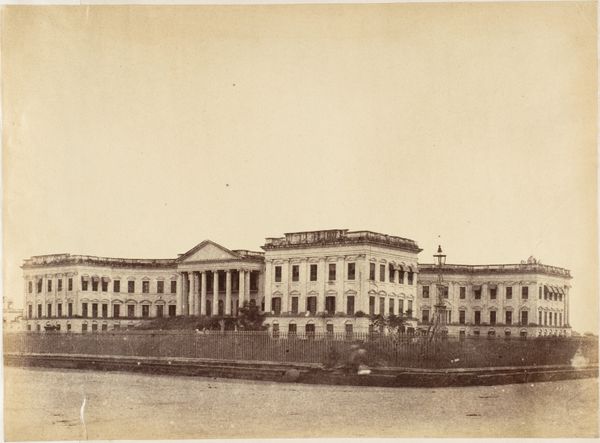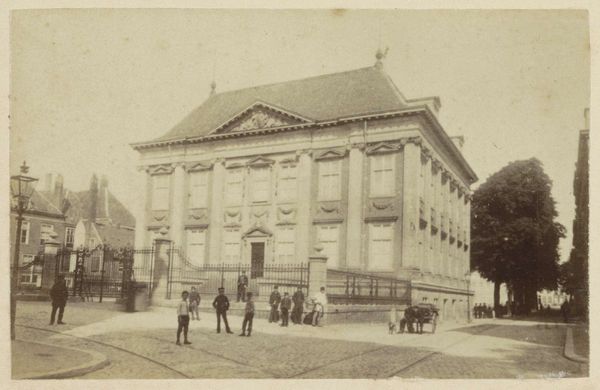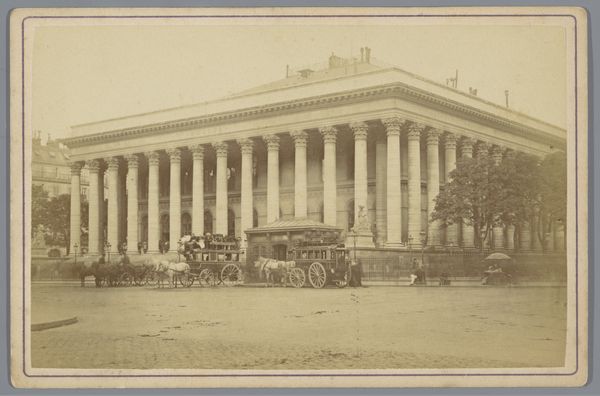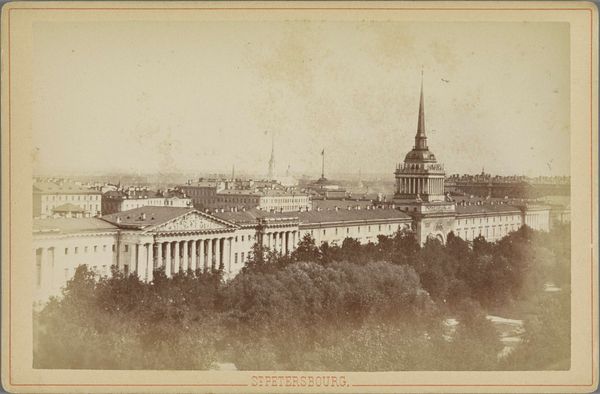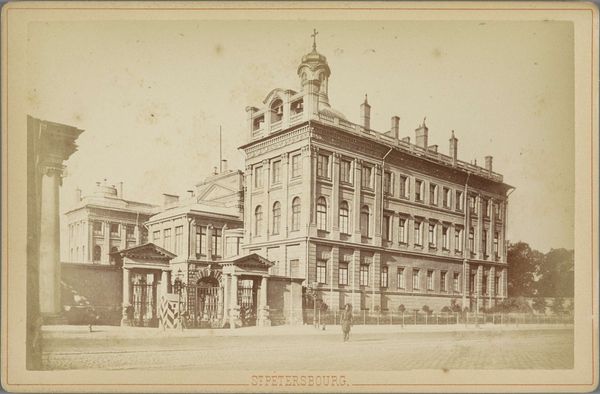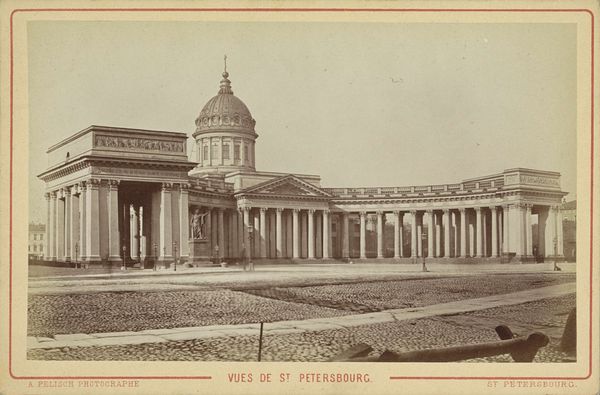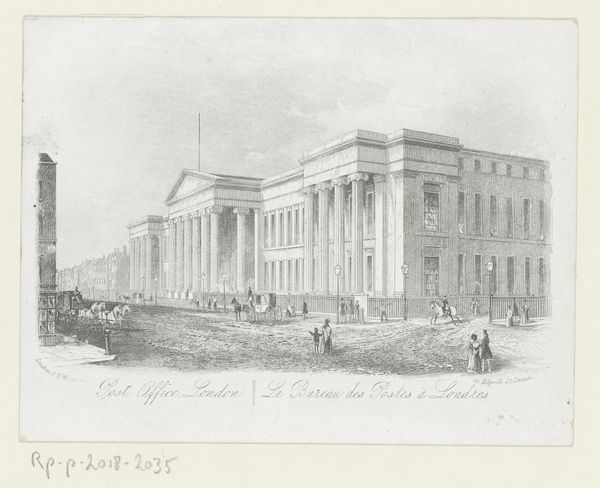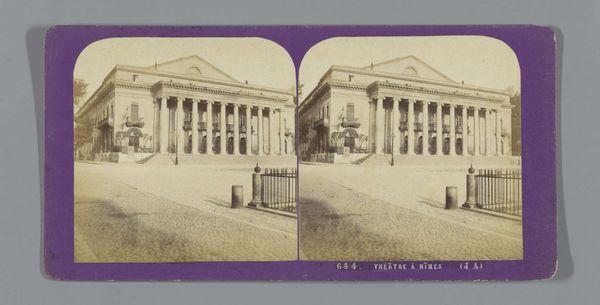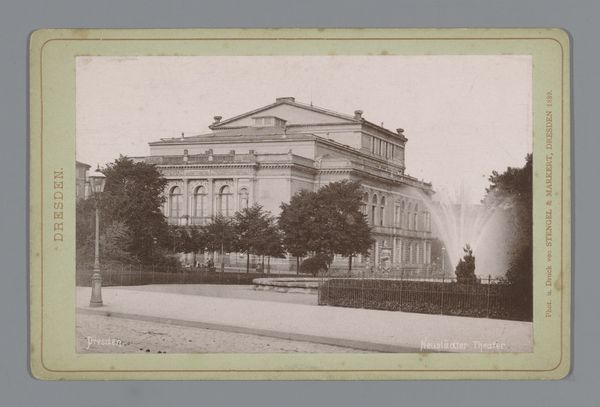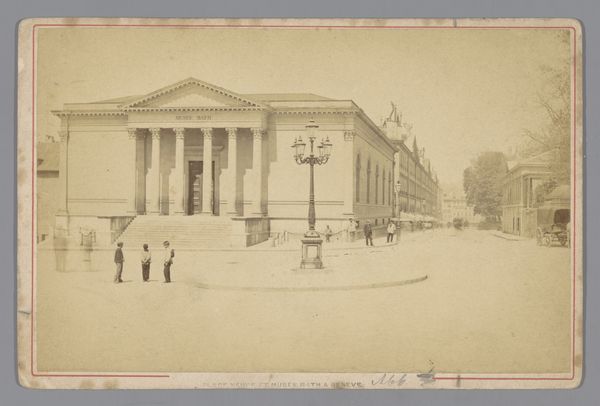
photography, gelatin-silver-print
#
landscape
#
photography
#
historical photography
#
orientalism
#
gelatin-silver-print
#
19th century
#
realism
#
building
Dimensions: height 92 mm, width 150 mm
Copyright: Rijks Museum: Open Domain
Curator: What a fascinating gelatin-silver print, seemingly from the late 19th century, around 1880-1900. It’s a view of the Admiralty building in St. Petersburg, by Albert Felisch. Editor: It’s strikingly stark, isn’t it? The light is subdued, creating a strong contrast between the architecture and the bare trees, giving a melancholic feeling. The photographic technique used seems precise. Curator: Yes, the sharp lines and the tonal range that we see in gelatin-silver prints offered then unprecedented realism in the photographic medium. I’m also interested in what the choice of subject tells us. This building, a powerful symbol of Russian naval power, placed in this orientalist style, speaks volumes about the Russian empire’s self-image. How it saw itself projected onto the world. Editor: The use of albumen paper—a relatively new technology then—allowed for multiple copies. Its materiality, and how that reproducibility democratized images of power—and what that meant to the social context… Curator: Absolutely. Photography was instrumental in constructing and disseminating national identity. Felisch and others were capitalizing on the rise of tourism and a thirst for knowledge about the Russian empire. Images like these circulated widely. The architecture reinforces hierarchy in society by its grandiose size. Editor: The bare trees do suggest a temporal aspect – perhaps symbolizing the shifting political landscape or cycles of change the Admiralty building has overseen, but at the same time it gives context, how much human labour went into this – from camera makers, to silver mining for photographic paper. Curator: Precisely! Thinking about labor – the building required the extraction and manufacturing of the building materials for the creation of architectural marvels such as this Admiralty building, which is also important to contextualize. And this highlights, even further, the grand scope of the Russian empire during this historical juncture. Editor: So, we move from analyzing not just what's shown but the conditions under which that imagery becomes part of public consumption, highlighting the process involved. A photograph never captures only what is visible. Curator: Indeed, this work helps illustrate how state power and the act of its representation are intertwined, which the technique of this gelatin print then captured.
Comments
No comments
Be the first to comment and join the conversation on the ultimate creative platform.
